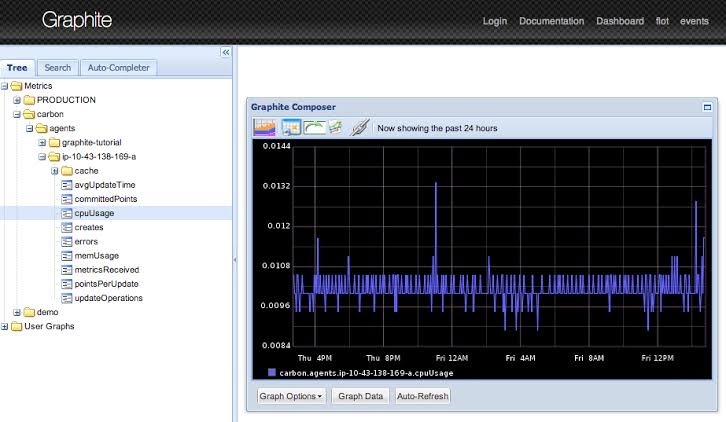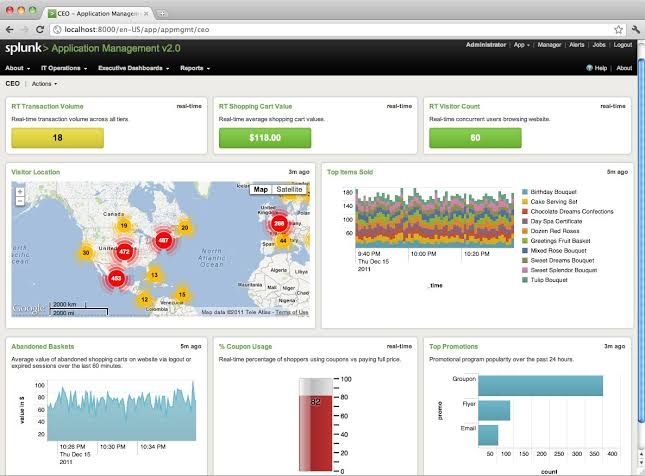Table of Contents
Introduction
Graphite and Splunk are data monitoring and visualization services with different pricing models. Graphite is open-source and free, while Splunk is a paid service with pricing starting at $225/month for Splunk Enterprise. Hosted Graphite is available at a starting price of $99/month. Choose based on specific needs and budget.
Key takeaways
- Graphite can monitor, store, alert, and visualize time-series data.
- Graphite is open-source and free.
- Splunk is a one-stop shop for everything related to data management, and it can be used in a wide range of fields (IoT, IT, security, and business metrics).
- Splunk is a proprietary service that can cost a lot of money.
What is Graphite?
Graphite is an open-source time-series monitoring software that was first released in 2008. It’s a push-based monitoring software, which means it collects metrics by taking information already being expressed and then recording and visualizing it. Graphite usually works together with StatsD or collectd to pull the time-series metrics from an infrastructure. The metrics are then aggregated and stored in Graphite’s database, Whisper. Graphite allows companies to monitor, store, and visualize data, as well as alert on specific events. Hosted Graphite is available through MetricFire, with Hosted Grafana included in the package.
Get our free trial and start using Hosted Graphite in minutes. You can see if Hosted Graphite is the right fit for you. Book a demo and talk to us directly if you have any questions.
What is Splunk?
Splunk is a paid data monitoring and visualization service with experience in IoT, security, IT, and business analytics. Splunk can visualize any machine-generated data. Splunk also supports data storage and has both an on-premise and cloud setup. One of Splunk’s biggest strengths is real-time visualization. Splunk supports all kinds of data management issues, from data collection to visualization and analysis. Splunk has a strong customer support team and is ready to assist from the beginning to the end.
When to use Hosted Graphite by MetricFire?
Use Hosted Graphite when you …
- Need time series monitoring for infrastructure.
- Need to visualize data from multiple different sources.
- Need alerting on key events.
- Need a hosted service because your infrastructure is too large to do it yourself.
When to use Splunk?
Use Splunk when you …
- Want a hosted data collection, monitoring, visualization, analysis and storage service all in one place.
- Want to visualize real-time data.
- Want to create a stored database of important machine generated information.
- Want to create searchable databases that you can monitor and visualize.
Pricing comparison
- Graphite is open source, and free.
- Business-ready Graphite as a Service by MetricFire, including Hosted Graphite and Grafana, starts at 19 USD a month.
- Splunk Enterprise is 225 USD a month.
- Splunk Free is available for 1 user and up to 500 MB of data per month.
- Splunk also has volume-based pricing and various specific products that can be purchased at other prices.
Conclusion
In conclusion, Graphite and Splunk are powerful tools for monitoring, storing, and visualizing data. Graphite is an open-source software that works best for time-series infrastructure monitoring. At the same time, Splunk is a paid service that offers a one-stop-shop solution for data management and visualization. Graphite is a cost-effective solution, with a free open-source version available, while Splunk provides a more robust and real-time visualization experience. Ultimately, the choice between the two will depend on the specific needs of the organization and its budget. Hosted Graphite by MetricFire offers a business-ready version of Graphite with added features, making it an excellent option for those who need a more comprehensive monitoring solution.
Get to know our Hosted Graphite better, and check out how MetricFire can fit into your monitoring environment! Get a free trial and start using Graphite now. Feel free to book a demo and see what Hosted Graphite can do for you.





